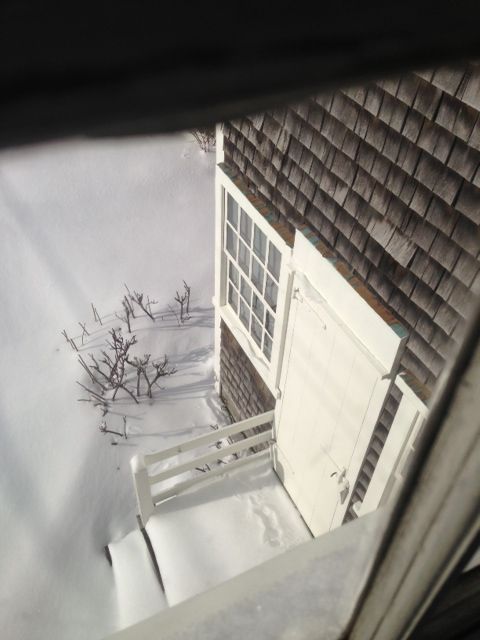Life on Vestal
You would think in the midst of town – albeit the edge of town – that animal life would not be as abundant. However, that is not the case. I know I have written extensively about my nemesis – the rabbit – but we have other creatures hiding about. You just have to take time to notice.
For example, deer tend to come into tow. It used to be that they mainly only came in during the winter when it was quieter. In summer, they tended to shy away from more crowded areas though not exclusively. Now, with more building outside of town, they come in more often, and year-round, because there are some good pickings for food. A few weeks ago, I walked into the Mitchell House backyard and the first thing I notice was a smell. It was the distinctive smell of ivy that’s been cut. I looked down and noticed that the ivy along the hedge had been eaten – the leaves nipped off and the stems left behind. Now deer never used to eat ivy. This is a more recent phenomenon that I have noticed over the last few years. In some places, over the course of a winter, they eat ALL the leaves off exposing the old vines along the ground and on trees and even revealing ancient picket fences that look like they may fall over without the ivy and which haven’t seen unfiltered sun in many, many years. So far, the ivy has come back each spring and while it’s an invasive nuisance it does help to hide bare spots where other things won’t grow – or hold up an ancient fence. (The deer also left me a deposit. I guess her or his way of a thank you – ha.)
Then there was the Red-bellied Woodpecker. I was sitting at a meeting facing out into the office driveway area and noticed him on the tree. He pecked and hopped about the trunk and then stuck his head slowly, several times – going more deeply each time – into a hollow in the tree that likely someone else had made. Finally, he hopped into it and remained inside for the length of my meeting, occasionally popping his beak out ever so slightly. A nice accommodation for the winter. If you are not familiar with the Red-bellied, I include an image here – they have quite the bright red patch on the back of their heads, which makes them instantly recognizable, and always a shock when you catch that glimpse of red.
At the MMA, we have a wonderful stand of cedars on the west side of the MMA Research Center and they attract all sorts of interesting birds, Cedar Waxwings among my favorites. The trees on the MMA grounds are a mecca for all sorts of birdlife, including my first Brown Creeper about a dozen or so years ago, and on and off a Yellow-bellied Sapsucker up in the gingko tree that one of our former board members and the former director of the UMASS Field Station gave us, Wes Tiffney.
As my friend and mentor, Edith Andrews, always said, “If you don’t look, you don’t see. You have to go and look.”
JNLF
Recent Posts




